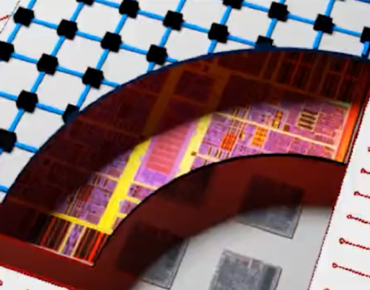DARPA Strengthens Ties with Arm

Arm Ltd. is expanding its partnership with the Defense Advanced Research Projects Agency to provide greater access to its semiconductor intellectual property portfolio under an umbrella DARPA microelectronics initiative.
The U.K chip vendor has been a key supplier on several chip development efforts managed by DARPA’s Microsystems Technology Office, including efforts to embed security features into chip designs as well as a low-power sensor effort. Those projects are being managed under the defense agency’s three-year-old Electronics Resurgence Initiative (ERI) aimed at reviving U.S. chip manufacturing and securing DoD’s electronics supply chain.
DARPA officials noted during a recent virtual ERI event that Arm is providing 1,000 license seats to access its low-power design technology to be used in a development program called N-Zero, for Near Zero Power RF and Sensor Operations.
Arm is also participating in DARPA chip design effort dubbed Automatic Implementation of Secure Silicon (AISS) that would allow silicon architects to specify performance constraints while automating the design-in of defenses that would secure an entire device lifecycle.
The IP vendor is a member of an AISS team led by Synopsys (NASDAQ: SNPS) designing a chip “security engine” based on an ARM architecture.
“DARPA’s programs within the Microsystems Technology Office focus on the most advanced challenges in microelectronics,” said Serge Leef, who leads the office’s design automation and secure hardware programs. Along with secure chip design, the office is overseeing many of the elements of DARPA’s electronics initiative launched in 2017, including new chip materials and devices and 3D chip packaging.
As the agency looks to secure the U.S. semiconductor supply chain, it is also seeking to develop dual-use chip technologies that will advance the state of the art.
An Arm IP license gives DARPA contractors “a portal to the world’s largest open compute ecosystem of silicon designers and software developers, enabling the lowest [system-on-chip] build costs and smallest risk profile,” the agency said in announcing its three-year partnership agreement with Arm. The licenses would cover a range of capabilities, including hardware design verification, physical implementation of chip designs as well as software development.
“Our expanded DARPA partnership will provide them with access to the broadest range of Arm technology to develop compute solutions supported by the world’s largest ecosystem of tools, services and software,” said Rene Haas, president of Arm’s IP Products Group.
Related
George Leopold has written about science and technology for more than 30 years, focusing on electronics and aerospace technology. He previously served as executive editor of Electronic Engineering Times. Leopold is the author of "Calculated Risk: The Supersonic Life and Times of Gus Grissom" (Purdue University Press, 2016).











